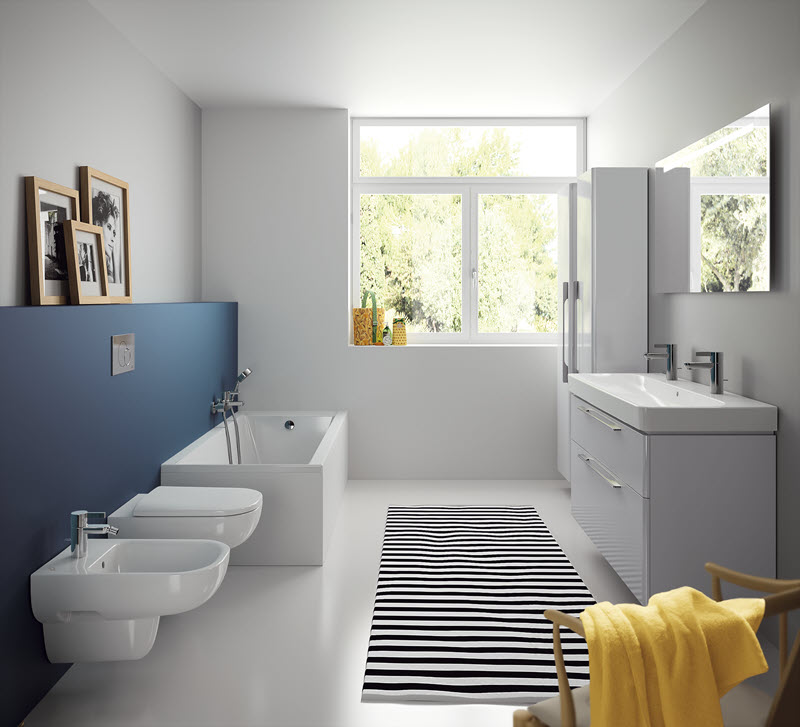Home & Lifestyle businesses increasingly find that if they want to successfully launch new products that stand out on the market, they must move away from using basic CAD tools to design and build them. Those leading the way today take advantage of powerful 3D design tools within a single data platform to connect the dots between their design and engineering disciplines and develop all product assets in 3D. The result: teams that collaborate with ease to perfect designs, identify and resolve manufacturing constraints and launch better products at record speed.
Whether you’re making and selling bathroom suites or office furniture, there is no denying that today’s consumer marketplace is more complex and demanding than ever. With so much choice available to consumers at competitive prices, Home & Lifestyle businesses need to be able to create products that blend aesthetics and function, balance cost and quality, and then launch them to market in a timely manner.

Without digital continuity from design concept to manufacturing, though, it’s easy for processes to break down and mistakes to arise. Lacking a single version of the truth, critical information gets lost along the way and manufacturing feasibility goes unchecked, throwing up errors and quality issues. As products grow in complexity, processes become more time and labor management software intensive, leading to escalating development costs and lead times.
So if you find yourself falling into the trap of constantly having to rework products to make them viable or face shrinking margins with every new product launch, now is the time to rethink your IT and consider the advantages of a consolidated design and engineering platform.
Here are five top benefits Home & Lifestyle businesses can expect to achieve by connecting their processes and enabling digital continuity:
1.) Test and validate designs early on
When designers and engineers use the same tools on one platform, they are empowered to work together in a single collaborative environment. By seamlessly connecting multiple disciplines and handling all product assets in 3D, companies can test and validate designs, and program and simulate manufacturing before production begins. Production information is built into designs from the onset to ensure their manufacturability, and designers and engineers can work together to get products right first time and develop effective design-for-cost strategies.
2.) Be more innovative
Launch better, more innovative products faster by giving designers access to powerful 3D design and virtual simulation tools that allow them to explore more alternatives and experiment with different concepts, materials and technology. With the ability to exchange designs in real time with their engineering colleagues, they can ensure technical compliance from the start and consider a greater range of design options.
3.) Be first to market
With consolidated data platforms, optimized processes and realistic simulation capabilities, businesses can get more designs right first time while reducing the number of design iterations and physical prototypes they need to make along the way. Strong communication between design and engineering enhances decision-making and ensures each new project progresses as smoothly as possible, anticipating issues before they occur and preventing mistakes and delays further down production chain. Designers also benefit from being able to easily find and reuse existing designs in subsequent projects, considerably cutting new product development time and allowing them to bring new products and iterations to market faster.
4.) Reduce costs
Home & Lifestyle companies can expect to reduce product development lead times by up to 30% and lower product development costs by 10% by unlocking digital continuity and collaborative design and engineering capabilities. That’s because digital continuity improves traceability and empowers everyone to detect, test and resolve problems early in the product development process to reduce manufacturing problems and customer use issues, which can affect sales later on. Virtual simulation also helps to the number of physical prototypes that need to be made, saving on associated costs.
5.) Deliver on sustainability goals
Develop effective design-for-cost strategies in compliance with sustainability targets and safety norms by connecting all processes from the very beginning and mastering complexity, both in terms of product design and production. With powerful 3D tools, designers are empowered to try out new designs using sustainable materials and concepts that lead to products that consume less energy throughout their lifecycle. Meanwhile, improved collaboration increases design and engineering efficiencies to deliver functional, durable and sustainable products that adhere to time and budget constraints, reduce costs and waste, and deliver on what customers really want.
Dassault Systèmes provides industry-leading solutions on the 3DEXPERERIENCE platform that make digital continuity and collaborative innovation a reality in Home & Lifestyle businesses.

